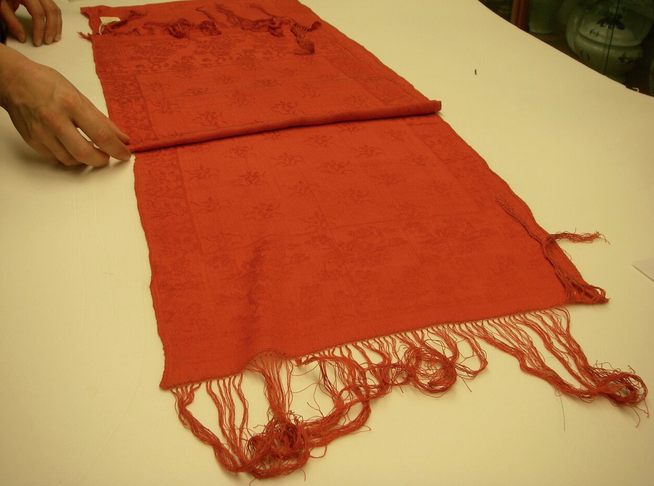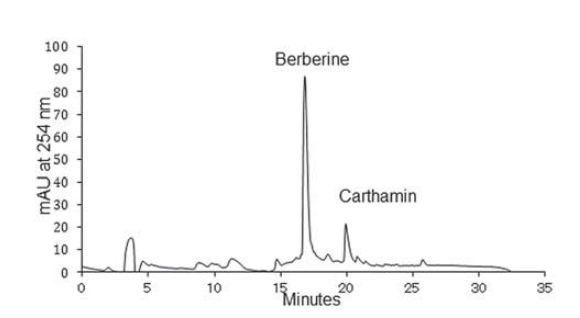Difference between revisions of "PEM E79076, embroidered silk shawl, China (19th century)"
Jump to navigation
Jump to search
| (One intermediate revision by the same user not shown) | |||
| Line 10: | Line 10: | ||
HPLC profile of a low temperature (~50 °C) extract of fibers from a red 19th century Chinese silk shawl showed that both carthamin (red) and | HPLC profile of a low temperature (~50 °C) extract of fibers from a red 19th century Chinese silk shawl showed that both carthamin (red) and | ||
| − | berberine (yellow) dyes were detected. Carthamin was most likely come from safflower and berberine from a plant that contains alkaloids, for example [http://cameo.mfa.org/wiki/Amur_cork_tree_(Phellodendrom_amurense_Rupr._Rutaceae)_LC amur cork tree]. [2] | + | berberine (yellow) dyes were detected. Carthamin was most likely come from safflower and berberine from a plant that contains alkaloids, for example [http://cameo.mfa.org/wiki/Amur_cork_tree_(Phellodendrom_amurense_Rupr._Rutaceae)_LC amur cork tree] or [http://cameo.mfa.org/wiki/Chinese_cork_tree_(Phellodendron_chinense)_LC Chinese cork tree] [2] |
== HPLC profile == | == HPLC profile == | ||
Latest revision as of 13:22, 5 September 2017
Artifact Information
Orange-red Chinese embroidered silk shawl. Early to mid-19th century.
The Peabody Essex Museum in Salem, MA USA. E79076.
Summary of results
HPLC profile of a low temperature (~50 °C) extract of fibers from a red 19th century Chinese silk shawl showed that both carthamin (red) and berberine (yellow) dyes were detected. Carthamin was most likely come from safflower and berberine from a plant that contains alkaloids, for example amur cork tree or Chinese cork tree [2]
HPLC profile
References
[1] Worth, S.(1986) "Embroidered China crepe shawls: 1816-1863; Dress 12:43-54.
[2] Richard A. Laursen and Chika Mouri "Decomposition and analysis of cathamin in safflower-dyed textiles", e-Preservation Science 2013, 10, 35-37.

